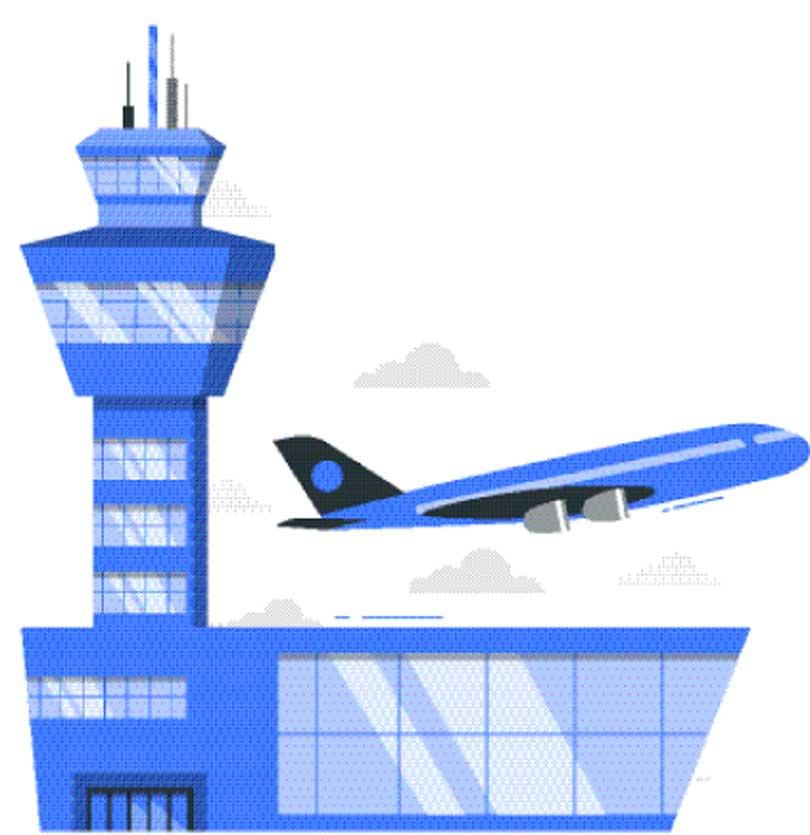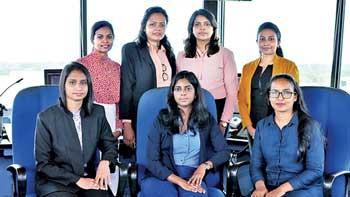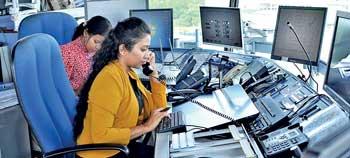10 Jul 2023 - {{hitsCtrl.values.hits}}

There are simulated practicals at allocated centres and we need to train for 180 hours under a licensed controller to complete the on-the-job training. We then have to do live air traffic controlling while officials from the Civil Aviation Authority observe.
 The day in the life of a female Air Traffic Controller (ATC) is filled with the rush of adrenaline at any given minute. Continuous updates from different control towers, aircrafts that arrive and depart, fellow controllers who check weather and other updates keep this operation going. But what is unique about being an Air Traffic Controller is the fact that they not only have to take instantaneous decisions but they have to think and act fast all the time!
The day in the life of a female Air Traffic Controller (ATC) is filled with the rush of adrenaline at any given minute. Continuous updates from different control towers, aircrafts that arrive and depart, fellow controllers who check weather and other updates keep this operation going. But what is unique about being an Air Traffic Controller is the fact that they not only have to take instantaneous decisions but they have to think and act fast all the time!
“We have to be active both physically and mentally to avoid any issues. We are used to the disturbances because we can handle it. An outside call and various factors can however add to the stress.”
Not an ordinary job
 “I never wanted to have a career which was a desk job and here I am 10 years later, enjoying my career as an Air Traffic Controller ,” said Ruwani Weckasinghe, a Grade I ATC. It takes a great deal of sacrifice and dedication for one to become a qualified ATC. “We had to face numerous interviews, trainings and exams before we received our licenses. It’s a hidden job and it is only after we came here that we got to know the nature of the job.”
“I never wanted to have a career which was a desk job and here I am 10 years later, enjoying my career as an Air Traffic Controller ,” said Ruwani Weckasinghe, a Grade I ATC. It takes a great deal of sacrifice and dedication for one to become a qualified ATC. “We had to face numerous interviews, trainings and exams before we received our licenses. It’s a hidden job and it is only after we came here that we got to know the nature of the job.”
When Shehani Perera applied for this job she had no idea about what she was getting herself into. “I like the fact that it is not an ordinary job. It has been three years since I became an ATC and it has been quite interesting.”
Explaining the recruitment process, Perera further said that for one to be qualified as an ATC they need to face around seven exams in addition to interviews and get various clearances prior to obtaining their licenses. “Then there are simulated practicals at allocated centres and we need to train for 180 hours under a licensed controller to complete the on-the-job training. We then have to do live air traffic controlling while officials from the Civil Aviation Authority observe. It is after
all these procedures that we become qualified.”
A curated job role
 The responsibilities and tasks assigned to an Air Traffic Controller may look almost the same but the experiences and the scenarios they face are different on any given day. Seated in the hot seat at the BIA’s ATC tower, the ladies not only have a bird’s eye view of what is happening in the surroundings, but they need to observe even a slight change in the surroundings and report it to the relevant department. “We need to make sure that every past experience is adding to each day. There can be aircraft emergencies and so on. But what is special about this job is that when we go home at the end of the day we are stress free.
The responsibilities and tasks assigned to an Air Traffic Controller may look almost the same but the experiences and the scenarios they face are different on any given day. Seated in the hot seat at the BIA’s ATC tower, the ladies not only have a bird’s eye view of what is happening in the surroundings, but they need to observe even a slight change in the surroundings and report it to the relevant department. “We need to make sure that every past experience is adding to each day. There can be aircraft emergencies and so on. But what is special about this job is that when we go home at the end of the day we are stress free.
We don’t have anything to take home, except satisfaction,” added Weckasinghe. They are at their busiest during the peak hours of the day. “The morning peak is from around 7.00am to 8.00am and then it is mid noon and evening,” said Perera. “The mid afternoon and evening peaks have the highest traffic. During these times we need to coordinate with different levels. We have to be active both physically and mentally to avoid any issues. We are used to the disturbances because we can handle it. An outside call and various factors can however add to the stress.”
Underpaid for their skills?
When asked about challenges, the ladies mentioned that a better remuneration for the work they do, would be welcome.
“The passion keeps us here even under the stress we experience,” said Ruvini Rajapaksa, a senior ATC who has trained many of the ladies. “The income we get compared to female ATCs in other countries is very low. We have brought up the matter with relevant officials, but we have not seen any positive outcome yet. We do our maximum. When a person works without a satisfactory income and is subjected to so much stress they would usually opt for a better paid job.”
The ladies are stationed in Jaffna, Mattala and other centres four times a year, irrespective of whether they are newly married or not. One of the newer challenges is to cover the shifts assigned to most lady officers who have now opted to migrate. The ladies said that they would appreciate better restrooms and travel allowances.
They pointed out that there needs to be experienced ATCs to train the next generation of female ATCs. “When experienced people leave, we cannot cover for the loss. The team spirit is important in addition to being smart while giving out various commands to the aircrafts. An ATC requires daily training to improve their standards. We encourage newcomers to join this one-of-a-kind profession and experience it for themselves,” Rajapaksa said in conclusion.
22 Nov 2024 6 hours ago
22 Nov 2024 8 hours ago
22 Nov 2024 9 hours ago
22 Nov 2024 9 hours ago
22 Nov 2024 22 Nov 2024